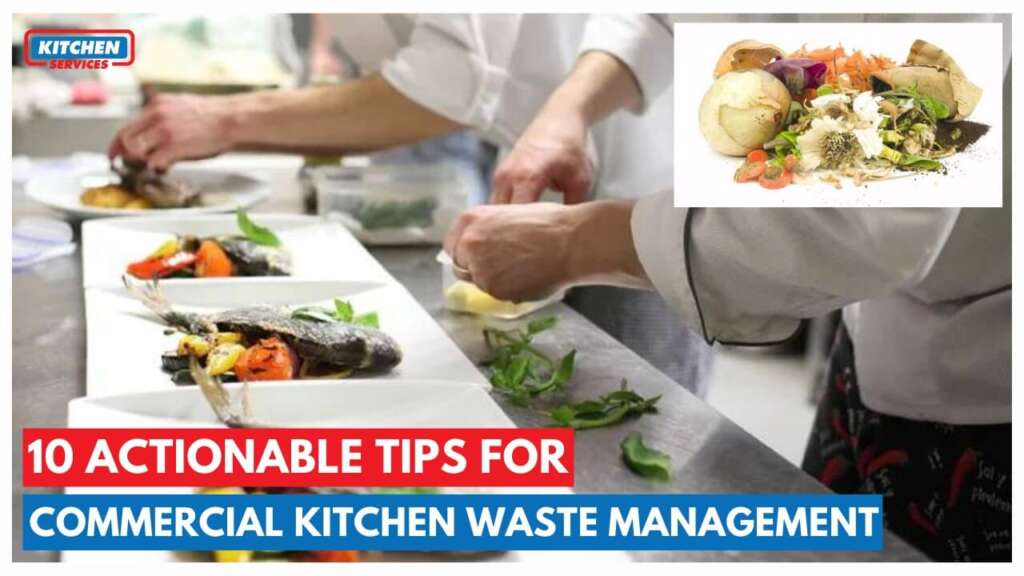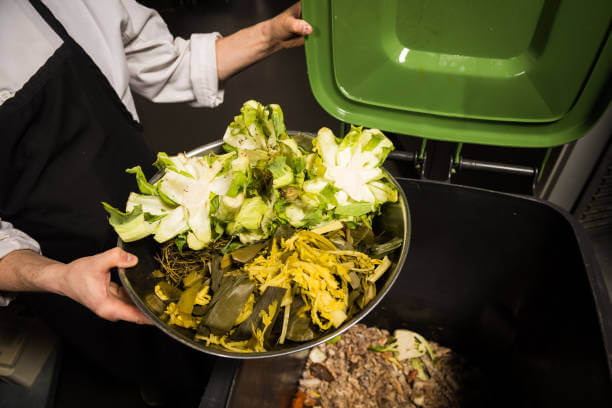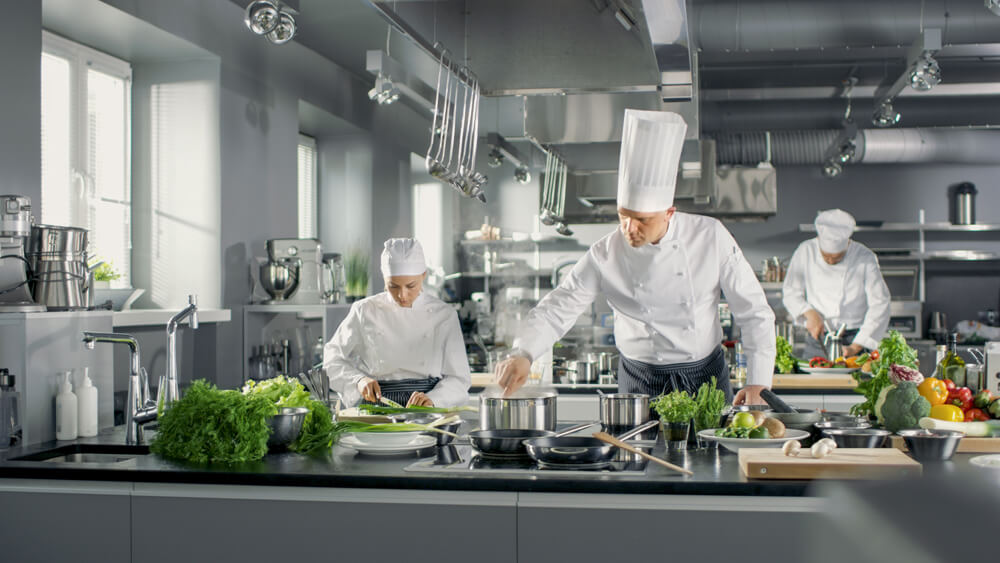We never know how much money we throw away in our trash every day or maybe we know but we do not know the ways to save the money that is lost through our food waste. Well, here in this article we will find the solutions to all these commercial kitchen waste management problems. All you have to do is to change your food service practices and reduce restaurant waste to a minimum in the best possible way.
Almost each and every day all the restaurants all over the world throw away a lot of food while a lot of people in this same world are dying due to hunger. For many of the people among us, this can be a good reason to be careful and take care of their food waste, and I hope we do need any other reason for that purpose. Keep this information in mind that the cost of food for the preparation of meals in the restaurant is the second largest expense in the restaurant industry, right after personnel costs. This information confirms that you can reduce these costs by almost 10 % if you are considerate and careful with everything you do. Have you got enough reasons to manage the restaurant waste management?
How to reduce waste in a Commercial Kitchen
In case your goals are to reduce, reuse and recycle in restaurants, the following are some of the ways that you can start from.
Waste less with some of these simple tips:
- Work with your suppliers to help manage your packaging
- Use returnable or re-usable transit packaging for fruits and veggies
- Serve drinks on tap, and offer refillable bottles
- Change menu to reduce leftovers
- Offer takeaway compostable containers to avoid food waste
- Reduce food spoilage by reviewing stock management and inventory regularly
What You Can Compost:
- Food scraps
- Fruit & vegetable waste
- Coffee grinds & filters
- Tea bags
- Compostable plates, cutlery & take-out containers
- Cardboard sleeves from hot beverage cups
- Paper towels & napkins
10 Steps for A Successful Restaurant Recycling Program
Create a recycling program
In order to reduce food wastage in your restaurant, you have to be very careful in order to recycle in all other parts of your business. Bulk produce and many other necessities frequently come in large cardboard boxes and containers. These cardboard boxes are not being recycled properly in your restaurants. Along with these cardboard boxes, cans and bottles of drinks are also very important rinsed and recycled in a proper way. Recycling these things rather than discarding them as much as possible will also help to reduce waste in this way you will be able to improve your establishment’s carbon footprint.
Pay attention to use-by dates.
It is said that 21% of restaurant food waste is because of food decay. It is very important that you have a trustworthy stock management system as well as a stock rotation system in place so that food does not get spoiled or go out of date before you even use it. You should always check the days regularly in order to avoid wastage.
How to Organize a Commercial Freezer
Donate leftovers to a local charity.
You can always set up a link with any local charity and you can donate the leftover meals from your restaurants as well as ingredients to those people who anxiously need them. Along with the charity, you may also set up a link with any local food bank. This will make sure that all your leftover food goes to a good home that really needs it, instead of watching it getting wasted.
Educate your employees
After you have developed a plan for minimizing your commercial waste, you can always set up a meeting with your employees in order to inform all of them about the recycling strategy that you made earlier. The moment all of the members of your entire team are on board and are well aware of all your strategies, your plans will become a lot easier to be executed. There is no doubt that food waste and all other types of waste are the reality of doing any business but improving commercial waste disposal can make your establishment far more eco-friendly and better.
Create a proper team responsible for managing the garbage
There is an option to hire a proper professional team in order to perform a waste audit or you can also do it with your own team. So the question here arises: who should be in the team? Well, that totally depends on your restaurant’s ability and extent of all the activities that are performed in the restaurant team that may consist of one or maybe there are more persons in there. The best option would be if those members are also involved in the preparation of the meals, because of the reason that they are comparatively aware of the number of specific ingredients that are being used when making a variety of dishes, this is also termed as rationing. On the other hand, the staff that is kept in charge of cleaning and washing dishes should be familiar with the type and quantity of the garbage that is left after customers finish eating so they can be responsible for that as well.
Store food correctly
Another factor in excess food waste is when the food is not stored at the optimal temperature. Check the storage temperatures of your refrigerators and freezers to ensure that all food will retain its freshness for as long as possible. As you all know, storing the whole food in the perfect conditions is very critical. Nevertheless, you should regularly check the temperature of your fridges and freezers. You should make it a policy to check the temperatures frequently and the staff must store items in the right places inside the fridge and freezers. The best formula for this would be low-risk foods above high-risk foods. By practicing this, you can make sure that your all ingredients stay for a longer time.
Temperature Guidelines for Commercial Walk-in Refrigerators
Examine all deliveries against the order specification.
At the time when the food delivery reaches your restaurant, it is very important that you only accept the things that you have really ordered in order to avoid excess and wasted food. You must also reject anything with noticeable spoilage or damage risks, and also anything that is delivered at the incorrect storage temperature, because of the reason that these foods will only spoil further and be thrown away later in the day and get wasted.
Rotate your stock
This is the key to avoiding wastage of food that you always use the oldest ingredients up first. In order to do this, you should always make sure that all your stock is rotated repeatedly, with the newest ingredients that are being placed at the back of your kitchen’s shelf. Without any stock rotation, your older ingredients will eventually expire and have to be thrown out without even being used. You must pay attention to use-by dates and take into account all those ingredients when you are rotating your stock because your oldest stock may not certainly have the shortest use-by date.
Change your menu
In case you have a vast menu, you should consider reducing it a little. The more dishes that you will have on your menu, the more ingredients you will have to purchase. Whenever you observe that there are certain dishes nobody has ordered for a long time, you should remove them from your menu, because you will be buying the ingredients just in case. As an advantage, you can also create a new menu that includes lots of the same ingredients, so you are not buying extra, for example, four butternut squashes just in case someone orders that one meal on the menu.
Exercise portion control
Your internal food waste audit will have let you know if your portion sizes are an issue. If most customers leave food on their plates, either the food quality needs to be improved, or the portion sizes are too big to eat for a single person. You will know if the food needs working on as you will get complaints and diners won’t return.
Products being used in your kitchen lab that could be recycled
Products present in your kitchen that can be recycled includes
- Cardboard
- Paper
- Food boxes
- Beverage cans
- Food cans
- Glass bottles
- Jars (glass and plastic)
- Jugs
- Plastic bottles and caps



